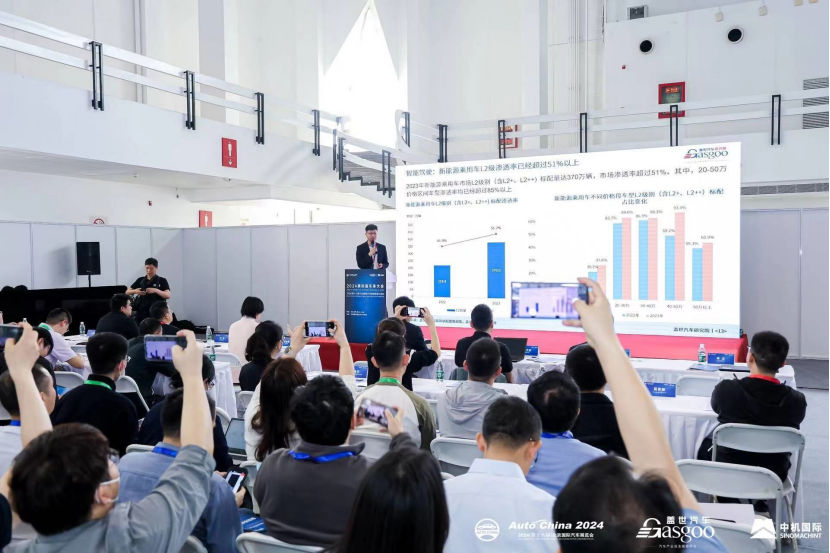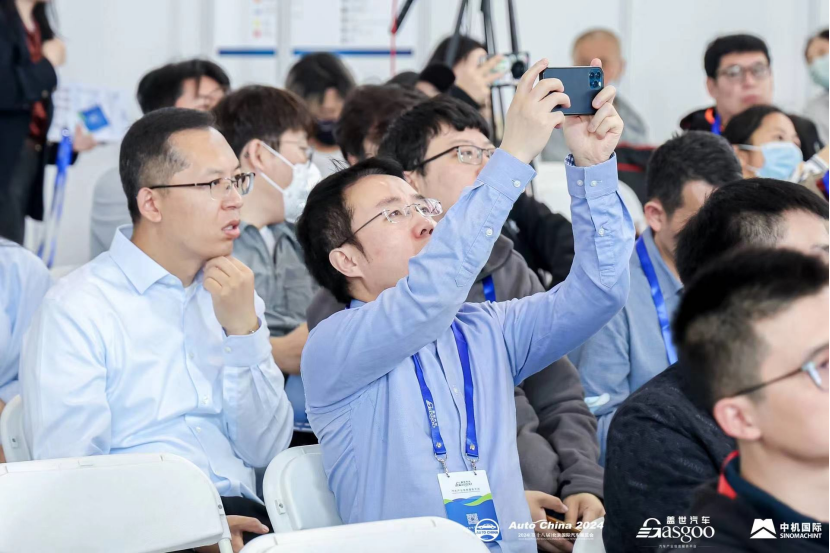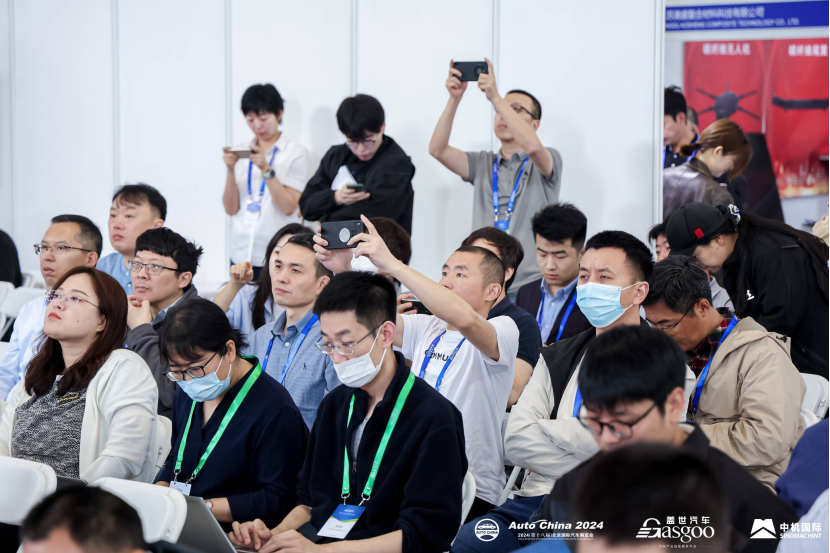activities 2018-06-08
On April 25, 2024, the 4th Auto Body Conference 2024, jointly organized by the Beijing International Auto Show Organizing Committee, China Machinery International, and GAC Motor, grandly opened in Beijing. The conference will last for two days and will be held simultaneously online and offline.
The lightweight, environmentally friendly, and integrated development of automobile bodies is one of the important trends in the current automotive industry reform. Driven by this trend, car body materials, structures, and manufacturing processes have undergone comprehensive upgrades, iterations, and technological innovations, continuously helping car companies reduce costs, increase efficiency, and strive for advantages in the new round of "price wars". Local car body related enterprises, on the other hand, rely on their outstanding advantages such as rapid response to market changes and stable supply chains to break business boundaries and seize growth opportunities in the wave of industrial innovation.
At present, what are the new technologies and trends in lightweighting of automobile bodies? What are the new body materials that are both lightweight and have high strength, rigidity, and durability? How to optimize the connection processes such as welding and riveting to ensure the strength and accuracy of the connections between body components? How to adjust the laser welding process parameters for body parts of different materials and thicknesses to achieve high-quality welding?
To assist enterprises in breaking business boundaries and achieving innovative development, the 4th Gaishi Automobile Body Conference 2024 focuses on the development trend of the body, inviting leading figures from OEMs and component suppliers to discuss hot topics such as vehicle lightweighting, automotive safety regulations, body structure design, and imitation technology processes, and discuss various possibilities for industry development.

This conference thanks 21 ecological partners, including Hexacon, Valin ArcelorMittal, Valin Steel Baoli, Jiwen Metal Technology, Ausheng Composite Materials, Suzhou Hongneng Precision, and Guangdong Aomei High tech, for their strong support.
welcome speech
The theme of this year's Beijing Auto Show is "New Era, New Cars". Against the backdrop of a complex global environment, China's automotive industry is striding confidently into a brand new era. The emergence of cutting-edge technologies such as electrification and intelligence has brought unprecedented new opportunities to the automotive industry.
What should new formats and new ways of playing be in the fiercely competitive industry?
CEO of GAC Motor, Zhou Xiaoying, frankly stated that if we only focus on the competition of price itself, then this path will only become narrower and fall into a vicious cycle. We must start from technological product innovation and improving operational level to comprehensively enhance the competitiveness of enterprises. This is not only a severe test for every enterprise in the new era and the new automobile era, but also a common challenge and direction for our efforts.
Zhou Xiaoying also mentioned that only by better finding innovative solutions, creating value for consumers, and helping car companies create truly popular cars in the market, can they overcome the current extreme difficulties and achieve sustainable development of the industry. Gaishi Automobile is a leading global information service platform for the automotive industry, adhering to the mission of discovering good companies, promoting good technology, and achieving automotive professionals, providing various professional information services for the upstream and downstream of the automotive industry.

Zhou Xiaoying | CEO of GAC Motor
Outlook for 2024 China Passenger Car Market and Supply Chain Transformation
What are the trends in the development of China's passenger car market as the price war continues to escalate? What is the development process of intelligent driving, intelligent cockpit, and automotive lightweighting? What are the new trends in the automotive supply chain ecosystem?
Regarding this, Wang Xianbin, Senior Director of Gaishi Automotive Research Institute, conducted an analysis based on relevant research data. From a macro perspective, the domestic passenger car market in China is expected to maintain a growth rate of around 3.0% in 2024, with the export market and new energy vehicles represented by extended range and plug-in hybrid vehicles continuing to grow rapidly.
Meanwhile, regarding the trend of lightweighting in automobiles, Wang Xianbin stated that from the perspective of China's lightweighting implementation path, the goal is to reduce the overall vehicle weight by 35% compared to 2015 by 2030. The mixed use of multiple lightweight materials will be the mainstream technology solution for reducing weight and increasing efficiency in automobiles. From the perspective of application scenarios, car companies generally use front engine compartment and rear floor die-casting parts, which can improve the physical performance of components while reducing parts and welding points. Some car companies have tried integrated die-casting body parts.
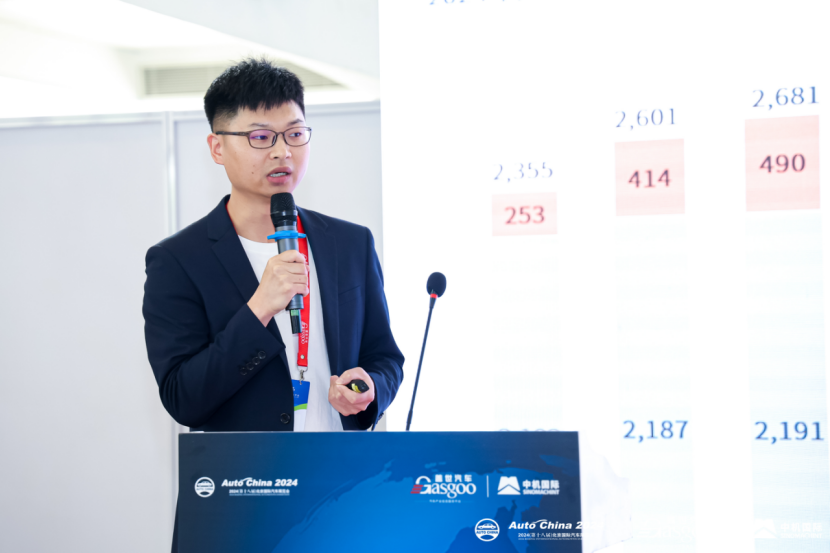
Wang Xianbin | Senior Director of Gaishi Automotive Research Institute
The current situation and trend of new lightweight technologies for automobiles
China's automobile production and sales have been ranked first in the world for 15 consecutive years, and the production and sales of new energy vehicles have been ranked first in the world for 9 consecutive years. In 2023, China's automobile production and sales were 30.161 million and 30.094 million respectively, an increase of 11.6% and 12% year-on-year; The production and sales of new energy vehicles were 9.587 million and 9.495 million respectively, an increase of 35.8% and 37.9% year-on-year.
Professor Liu Bo from the Department of Vehicle Engineering at the School of Mechanical Engineering, Beijing University of Science and Technology, said that in the future, the manufacturing process of automotive bodies will be revolutionized by ultra large integrated die-casting and CTB/CTC technology, which will bring about a revolution in automotive design and production manufacturing; The second is the digital operation of stamping production lines, welding assembly production lines, and digital simulation of coating production lines.
Among many cutting-edge technologies, Unboxed process is Tesla's latest process. It divides vehicle components into six large modules, each produced separately, and then assembled into a complete vehicle. This can reduce 40% of manufacturing personnel, 30% of manufacturing space and time requirements, and lower final assembly costs to half of Model 3 or Model Y, making it a disruptive innovation in the industry. Liu Bo gave a comprehensive introduction to the industry status, advanced materials and processes for high-strength steel, advanced materials and processes for aluminum alloy, connection technology for car bodies, and new architecture for car bodies, based on a large number of car enterprise cases.

Liu Bo | Professor of Vehicle Engineering Department, School of Mechanical Engineering, Beijing University of Science and Technology
Research on Vehicle Body Development Based on Multiple Safety Evaluation Systems
Based on the "three objectives", a vehicle structure needs to meet the adaptability of multiple safety objectives, while also meeting the requirements of C-IASI/C-NCAP/Euro NCAP high-speed collisions.
Based on this, Ma Feng from the Safety Technology Center of China Automotive Engineering Research Institute Co., Ltd. proposed a development strategy for vehicle body structure: firstly, when there are similar working conditions in various evaluation systems, the focus should be on developing and optimizing with more severe collision conditions as the priority; Secondly, for the development of vehicle body structure, achieving a balance between rigidity and flexibility, as well as reasonable energy absorption and transmission, are key factors; Finally, gradually cover the same type of working conditions to achieve overall compliance in multi-objective vehicle development.
Ma Feng mainly shared in detail the three objectives (safety evaluation system), the development requirements and strategies for vehicle body structures based on the three objectives, the challenges of collision conditions on the vehicle body in each evaluation system of the three objectives, as well as the difficulties and strategies for developing working conditions in each evaluation system of the three objectives.
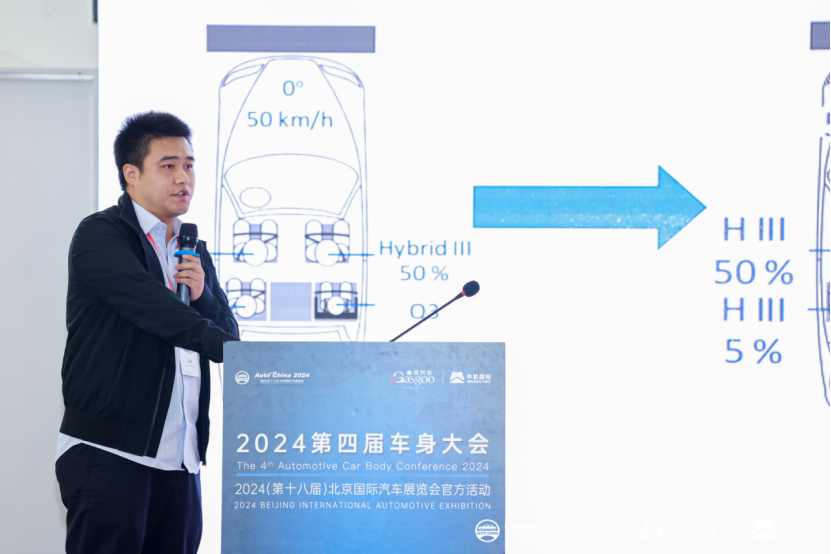
Ma Feng | Safety Technology Center of China Automotive Engineering Research Institute Co., Ltd
Digital technology empowers efficient research and intelligent manufacturing of vehicle bodies
Hexacon is a leading global provider of digital information technology solutions, adhering to the concept of "smart engine, empowering the future together", focusing on the "dual intelligence strategy", committed to the global layout of intelligent manufacturing and smart cities, promoting digital transformation, and ranking first in many high-tech segmented markets worldwide.
Wang Zhanxin, Vice President of Hexagon Automotive Industry Research Institute, mentioned that Hexagon has empowered the automotive industry with sensor technology, software, and digital platform technology. The detection efficiency of components has been improved by 75%, and 95% of cars on the road use Hexagon's technology. Hexagon's unique combination of hardware and software provides a full lifecycle solution for automotive intelligent manufacturing, helping cars achieve digitalization from concept to manufacturing. In terms of integrating digital and reality, the digital world and the real world are unprecedentedly combined to achieve real-time, front-end and back-end insights, using hardware and software to create a real-time closed loop between digital and reality, surpassing digital twins.
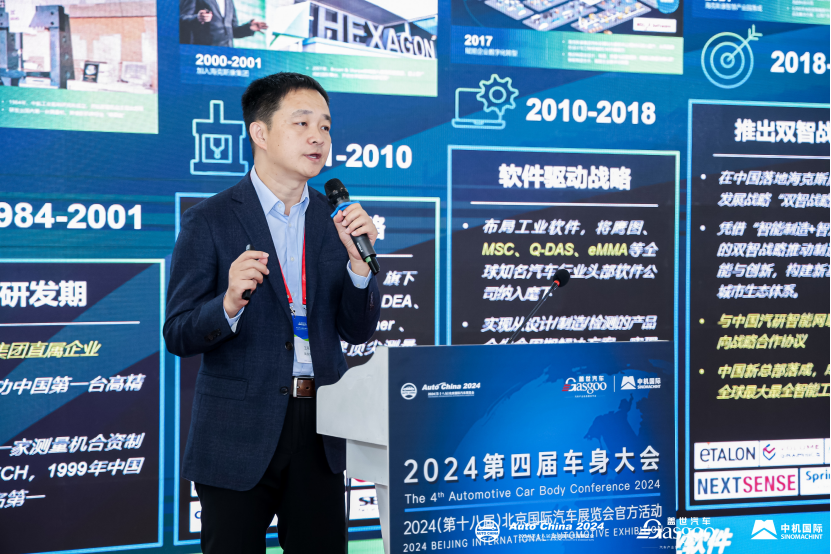
Wang Zhanxin | Vice President of Hexagon Automotive Industry Research Institute
Jike 001FR and integrated die-casting body
At present, there are two main paths for the development of large-scale integrated die-casting parts: one is to entrust suppliers to develop and manufacture, and then have the host factory install them; The second is the full stack self-developed by the host factory, with independent investment in the die-casting workshop.
Li Tianqi, the head of the development department for the body and interior and exterior architecture of Jike Motors, stated that Jike chose the latter, insisting on full stack self-developed and self-made, optimizing processes, and achieving efficient production. Jike Automobile has conducted in-depth research on the injection port position of large integrated die-casting parts, optimizing it to the middle to reduce the projection area and die-casting tonnage, and avoid resource waste. This process optimization not only shortens the filling distance, but also improves the performance of remote materials. Jike's die-casting factory adopts intelligent and digital technology to achieve self inspection, analysis, decision-making, and adjustment, ensuring the consistency of product quality. This intelligent production line has increased production efficiency by 30%, reduced waste rate by 20%, and achieved energy savings of 5%.
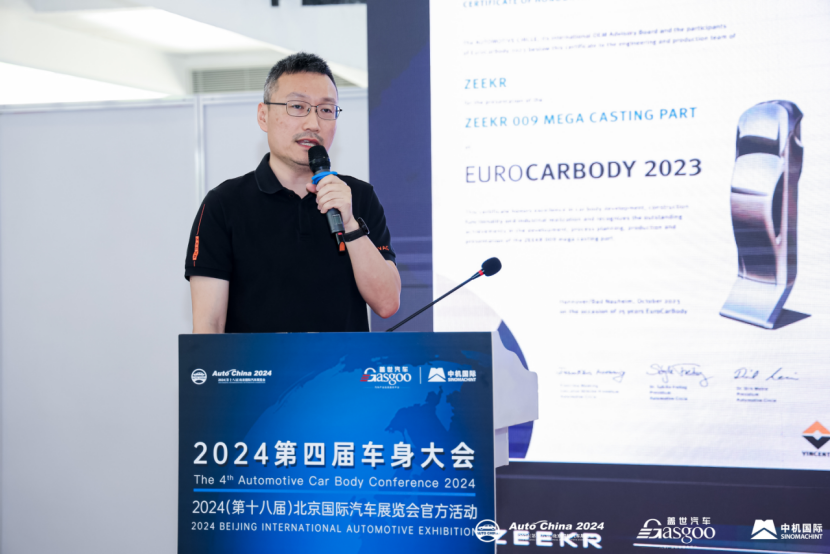
Li Tianqi | Development Director of Body and Interior Decoration Architecture for Jike Automobile
Dongfeng e π 007 lightweight high-performance body
Dongfeng's "Quantum Architecture" is a new generation of intelligent electric architecture independently developed on a full stack basis, which is a fully digital and highly scalable electromechanical integration architecture.
Kang Jie, the manager of the Vehicle Structure Design Department at Dongfeng R&D Institute, mentioned that this architecture has six major advantages: worry free travel, fearlessness of cold, ultimate space, ultimate energy saving, ultimate safety, and continuous evolution. It can achieve the integration of hardware layer, software layer, service layer, and ecological layer, thus providing customers with diversified and all scenario travel solutions.
In addition, Kang Jie talked about the four ultimate designs of the Dongfeng Yipai e π 01 body, including ultimate safety, ultimate performance, ultimate lightweight, and ultimate low-carbon. The overall vehicle safety performance design covers front, side, rear, and roof performance conditions, achieving C-NCAP five-star rating and achieving G-level passenger protection insurance index; Multi material hybrid application of white body, utilizing ultra-high strength steel/hot formed steel, plastic composite materials, and high-strength extruded aluminum profiles to achieve lightweighting, while carbon emissions during the single vehicle manufacturing stage are 234.7kgCO2/vehicle.

Kang Jie | Manager of Vehicle Structure Design Office at Dongfeng R&D Institute
HFQ ® The application of technology in the tailgate of automobiles
Yao Changming, Technical Director of Jiwen Metal Technology Co., Ltd., said, HFQ ® The tailgate technology has multiple advantages. Firstly, compared to steel tailgates, the lightweighting effect is better, with a weight reduction of 35-55%. Secondly, it has good corrosion resistance and can be used in harsh environments, extending the service life of the vehicle body and reducing maintenance and replacement costs; Has high strength and stiffness, improving the stability and safety of the vehicle body. Furthermore, it has high design freedom and supports integrated inner and outer panel design; Environmentally friendly, recyclable materials, aluminum alloy recycling rate greater than 90%, magnesium alloy recycling rate greater than 98%. In addition, the application and maintenance plans for aluminum alloy materials are mature; The agility of door opening and closing has been enhanced, and the sound of opening and closing doors has also been reduced.
In addition, the application of mixed materials will become a trend. The mixed material tailgate can utilize the characteristics of each material, select the appropriate material at the appropriate position, and leverage the advantages of each material to achieve a more optimal level of lightweighting and cost for the tailgate.
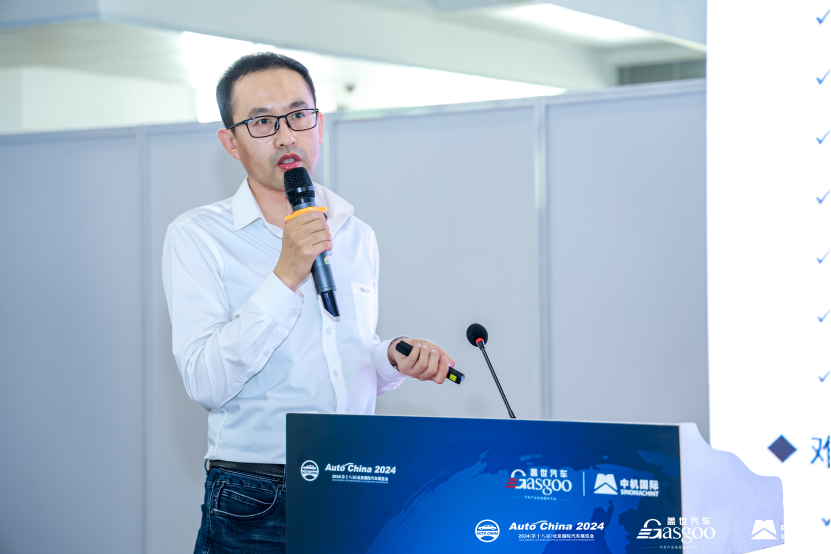
Yao Changming | Technical Director of Jiwen Metal Technology Co., Ltd
Exploration of Lightweight Design Direction for Carbon Fiber Composite Automotive Parts
Zhenjiang Ausheng Lightweight Automotive Technology Co., Ltd. was established in September 2021 and is a wholly-owned subsidiary of Jiangsu Ausheng Composite Materials Co., Ltd.
Zhang Shiwei, R&D Manager of Zhenjiang Ausheng Lightweight Automotive Technology Co., Ltd., stated that the current application status of carbon fiber mainly focuses on the fields of interior and exterior decoration and structural components. The development of interior and exterior decoration is mature, especially on the basis of drawing on foreign experience, with rapid growth in domestic applications. Its significant advantage lies in lightweight design and the ability to meet complex styling requirements, reflecting the high-end nature of the product. The aftermarket and modification market has become quite mature, and the front-end market has also flourished in China in recent years, with a preliminary estimated market size of billions.
In the field of structural components, carbon fiber has attracted much attention due to its excellent lightweight effect, high strength, and safety. Although the development process of structural components has been able to achieve large-scale production and meet the needs of mass-produced vehicles, their application in the market is still relatively limited, especially in the aftermarket and modification market, where their application is even more limited due to the involvement of overall body design.
With the gradual improvement of the front-end market, Ausheng is also increasing its investment and has developed multiple carbon fiber products, which have been successfully applied to models such as the Extreme Krypton 007.

Zhang Shiwei | R&D Manager of Zhenjiang Ausheng Lightweight Automotive Technology Co., Ltd
Quintus Flexform Technology Helps with Automotive Trial Production/Small Batch Sheet Metal Forming
Quintus Technologies is a global leader in high-voltage technology, providing design, manufacturing, installation, and support services for high-voltage systems.
According to He Lei, Sales Director of Kuangde Machinery Technology (Shanghai) Co., Ltd. in the Asia Pacific region, the principle of Flexform is to use rubber partitions instead of the upper mold in traditional stamping. The partitions are pushed into the lower mold cavity by high-pressure hydraulic oil to complete the molding process. The lower mold design is flexible and can adapt to various molding needs, so only half of the mold is needed to complete the molding, greatly reducing mold costs. More importantly, Flexform is suitable for manufacturing complex parts. Through flexible upper molds, it can penetrate into every corner of the mold cavity, achieving one-time molding, reducing stamping processes, and saving time.
He Lei said that Flexform's high voltage strength has many advantages. At the same time, to ensure safety, a steel wire winding structure is used to firmly fix the metal copper body with steel strips, ensuring safety even under high pressure. Compared with traditional stamping technology, Flexform's hydraulic technology is more uniform and can achieve the same pressure within a 360 degree range, ensuring consistent force distribution at all angles and levels of the parts, thereby improving the consistency and quality of part forming.

He Lei | Asia Pacific Sales Director of Kuangde Machinery Technology (Shanghai) Co., Ltd
Non metallic materials embrace the future of automobiles
With the development of automation and informatization, the transformation of Industry 3.0 has brought about profound changes in the form of automotive products, travel modes, consumption structures, and operation modes. The fields related to automobiles, such as interconnection, energy, communication, and transportation, have formed a diversified interconnected state. The automotive industry is facing unprecedented changes, and new technologies such as information IoT systems, artificial intelligence, virtual reality, and quantum communication will profoundly affect the development of the automotive industry.
Li Jinghua, Senior Director of the Non Metallic Materials Research Department at the National Key Laboratory of High end Automotive Integration and Control of China FAW Group Co., Ltd., admitted that currently, China's automotive industry has entered a stage of continuous innovation, no longer satisfied with just manufacturing cars, but to play a leading role in the global automotive track. Green travel, human-machine exchange, and autonomous driving are important directions for future development.
At the same time, with the introduction of national energy development policies and goals such as carbon peak and carbon neutrality, the automotive industry is accelerating its development towards a green and low-carbon direction. Throughout the process of changes in automobile manufacturing, materials, as the foundation of development, will continue to drive progress in the automotive industry.
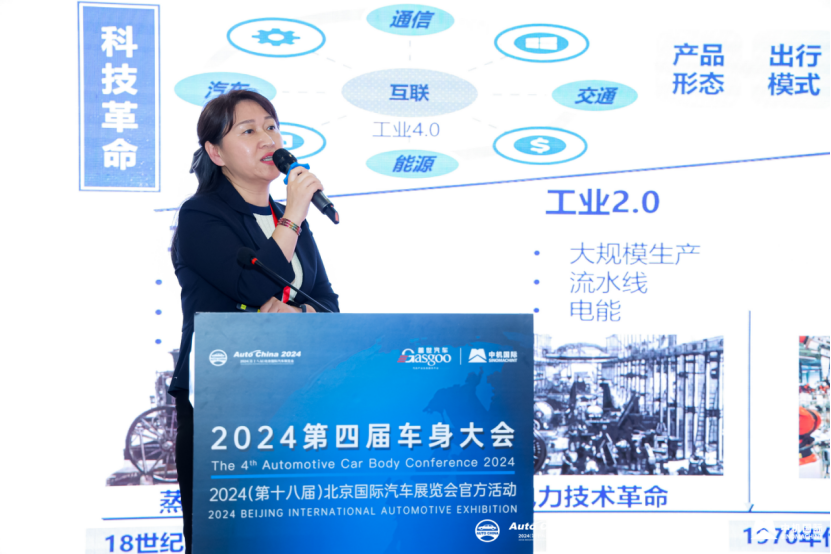
Li Jinghua | Senior Director of Non Metallic Materials Research Department, National Key Laboratory of High end Automotive Integration and Control, China FAW Group Co., Ltd
Thus, the agenda for the first day of the conference has come to a successful conclusion. Tomorrow, more heavyweight guests will gather together to give exciting speeches on industry hotspots such as automotive body integration technology and component connection technology!

